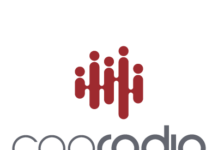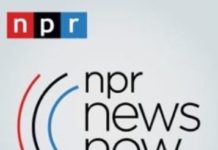
This is not a negative story about Nielsen. Nielsen is the ratings system, the currency radio uses and advertising agencies and local businesses rely on to make purchases and funnel millions and millions of dollars into the radio industry. Many would argue that since Nielsen purchased Arbitron, the bigger company is making more of an effort to improve its product for the industry. But those discussions are for another day.
The reality in radio is that not everyone has ratings. Some companies don’t subscribe to the ratings, for any number of reasons, and make the decision to sell without them.
The downside of not having numbers to sell is obvious: Your competitors will most likely have them. And since you don’t subscribe, they may not list you in a ranker. The upside is that declining to subscribe can save you a lot of money — money you might decide to put into sales training.
Our mission here is to provide information that will help everyone in the business succeed. This piece will be helpful to those who, for whatever reason, are not using Nielsen’s product to sell. Max Media in Virginia Beach had been using Nielsen (and Arbitron) for about a decade before General Manager Dave Paulus chose not to renew the contract with the ratings firm. It’s been one year since Paulus made that decision, so we reached out to him to see exactly how things are going selling without the numbers.
RADIO INK: WHEN DID YOU FIRST DECIDE NOT TO RENEW THE RATINGS, AND WHAT WENT INTO YOUR THINKING AS YOU GOT CLOSER TO THE CONTRACT ENDING?
Paulus: We had been talking about the entire relationship of our Nielsen partnership for years. As we got closer to our renewal time, the biggest concern and question we had was “Is the ROI from this significant cost paying off for us as a station group?”
We also operate in a market, Norfolk-Virginia Beach, that already had a non-subscriber, and frankly, the top three stations in this market seem to always be the top three stations, so there really wasn’t much changing of the layout of stations from month to month.
I’ll be totally honest, this decision was one of the toughest I’ve ever made as a GM, and caused me a lot of sleepless nights. I spoke at length to our sales leadership team, then our ownership group, and we all agreed it was time to move forward and see what life would be like without it.
RADIO INK: HOW DIFFICULT IS IT TO SELL WITHOUT THOSE NUMBERS?Paulus: It can be challenging, without question. In a way, you’re really flying the plane on instruments and have to depend on a lot of things that you can’t control externally. That being said, at the time we left Nielsen (and I would assume the circumstances are similar now), most all the stations in the market were within two or three tenths of a ratings point of each other — the congestion was intense.
At the end of the day, we speak to the quality of our products, the unique selling propositions we offer, and the confidence we have in our products to perform well. Since the group isn’t “delisted,” subscribing clients can see where we are, and they can decide if the combination of those factors, as well as our ratings position, allows us consideration to be part of their marketing mix.
RADIO INK: WHAT ARE THE ADVANTAGES TO SELLING WITHOUT THEM?Paulus: Well, there are advantages, actually. Our new business development, both direct and agency, is through the roof, as is our digital revenue development. We have some category initiatives, and we’re doing very well in those. As crazy as this may sound, I don’t miss the distraction of them at all. That PPM “fourth day” just comes and goes, and some days, I don’t even recall it.
No more PD conversations about the one meter that moved our group from fifth to 10th, and with the sellers, a 45-minute conversation about a $10 rate adjustment because our “29- book average” is showing us down a tenth of a point. You kind of get back to basics, and while we miss having the knowledge at our fingertips at times, there are benefits as well.
RADIO INK: DID YOU HAVE TO RETRAIN YOUR SELLERS?
Paulus: I’m immensely proud of our sales leadership team and our sellers. They accepted this was a business decision we needed to make for our long-term survival within a system we felt was much challenged.
There really wasn’t a lot of retraining to do. We had gotten in front of this decision with them so much, as well as with the marketplace, that when that day finally occurred that the computers didn’t have the ratings anymore, we and they just moved along. I committed to the sellers that I’d give them as many tools as possible and market the stations hard. I feel like I’ve lived up to that promise.
RADIO INK: DID YOU HAVE TO RETRAIN YOUR ADVERTISERS?
Paulus: As I mentioned earlier, it helped us that there was another non-subscriber in the marketplace that had been a non-subscriber for multiple years, so many of the advertisers and agencies that we shared were already used to one group not having Nielsen availability. That certainly helped this decision and our ability to execute it.
RADIO INK: DID YOU HAVE ANY SALESPEOPLE THAT JUST COULDN’T SELL WITHOUT THEM?
Paulus: Not at all. Every single seller, including the most tenured, handled the transition very well. Not every day is a joy without the numbers, and believe me, we’ve had some “moments,” but overall they’ve adjusted very well.
RADIO INK: DID YOUR RADIO COMPETITORS GO ON THE ATTACK?
Paulus: Not really (at least to my knowledge). I know there’s some competitors that don’t include non-subscribers in rankers and market layouts, and as crazy as it may sound, I actually understand that. When I was a subscriber and it came to listing a non-subscriber, I chose not to do that as well.
I didn’t feel like it was my responsibility to list a non-subscriber’s numbers, as long as I clearly mentioned that this was not a complete listing of stations and that there were nonsubscribers in the marketplace. (So the client had a clear understanding of the marketplace.)
I can’t be hypocritical now that I’m not a subscriber, as long as the stations state and the client is clear that there are non-subscribers in the marketplace. It’s much easier here, as 40 percent of the groups don’t subscribe and almost half the stations in the market won’t be included.
RADIO INK: HAVE YOU CONSIDERED RENEWING WITH NIELSEN?

Paulus: What are the advantages to having them? I think about it all the time, but there’s been nothing to make me change my direction at this time. I have a lot of friends within that company, and I have respect for what they do. I just can’t make a good enough ROI argument to bring it back.
That doesn’t mean I won’t in the future, but as of right now, that’s where I stand. The biggest advantage to having them is a clearer outlook on the marketplace.
RADIO INK: HOW DO YOU BONUS PROGRAMMING EMPLOYEES? TYPICALLY THAT IS RATINGS-RELATED.
Paulus: Very important element here: Anyone who had a Nielsen-related bonus plan was contacted and told that would be removed from their compensation plan. However, it’s certainly not fair (nor motivational) to just “take that money away,” so in most cases, I met with the talent directly and we worked out a digital, social, blog, podcasting, video, etc., bonus structure that allowed them to make similar, if not even more, bonus money.
Frankly, they loved it, as they finally felt like they were in control of the bonus opportunities much more than they were under the older system — and weren’t as reliant on some five-meter family in Poquoson to wake up in the right headspace.
Reach out to Dave Paulus by e-mail at [email protected]








The “BOOK” shows that noone has ever listened to KCAA in 20 years, although we have 250,000 hours of podcast downloads each month and a dozen shows on iHeart and three signals on the air in the Inland Empire market.
Unless your station can pull over a 2 in the market, you will be an “also ran” in a race you can’t win. The old saying holds true, “If you live by the book, you die by the book”
Think about it. A staggering amount of ad revenue is improperly allocated by ad agencies to a few stations in each market during every billing cycle. This rigged system has stolen hundreds of millions of dollars from stations each year that received no agency revenue while a few station that bought the book received their share.
If you think about it a little more, it gets real simple… like they say, just follow the money.
The ad agency disrupts the relationship between the radio station and the advertiser so the actual advertiser never has a relationship with the station. This disruption is rewarded by a 15% agency fee that should have been paid to the local sales representative of the radio station for his personal services.
Now, the agency simply looks in “book” and allocates 100% of the advertiser’s radio budget to a fractional portion of the total radio audience which in some markets can be only 50% of potential listeners.
The radio stations who buy the book know that their revenue will collapse without “the numbers” so they religiously pay to play.
Now, the circle is complete. The station pays for the book to get in the book. The ad agency reads the numbers and makes buys exclusively based upon a flawed system that everyone knows is flawed because it excludes many stations.
So, we end up with a system that adds to the cost of every spot while improperly directing the broadcast of all spots to a few stations. The system creates additional cost while actually reducing the value of each spot that is broadcast. .
The battle to prove ROI becomes more and more difficult as stations and agencies hear, “We don’t buy radio any more because it does not work for us”. I WONDER WHY???
Dave and team, sincere congratulations on acting on the power of an idea that can deliver measurable results. Results trump ratings – every time.